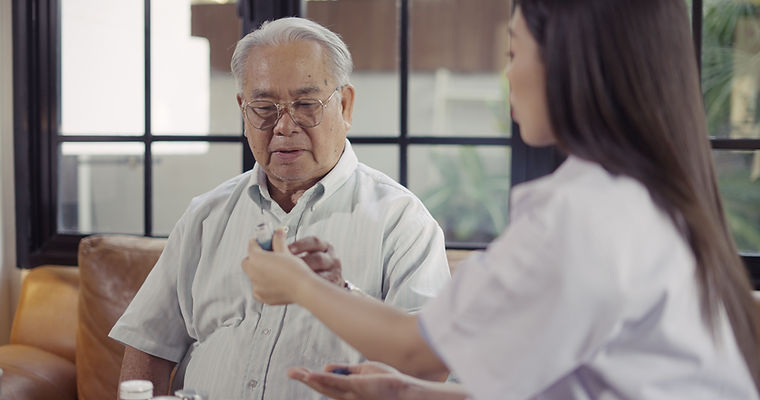Pharmacy Referral Study on High-Risk Asthma Patients
We are partnering with the Woolcock Institute to conduct an asthma awareness program in pharmacies. The goal is to help understand the prevalence of undiagnosed severe asthma in the community.
Purpose of the Study
The pharmacy referral study is designed to screen and identify patients at high risk of asthma-related complications. The goal is to provide timely interventions by referring high-risk patients to their General Practitioner (GP) for asthma management reviews. This initiative supports better asthma control and improved patient outcomes.
Pharmacist Actions and Workflow
Below is the step-by-step workflow when interacting with patients regarding the study:
Step 1: Screening
Patients who received specific respiratory medications in the past 12 months are identified for the study.
Step 2: Automated Communication
Patients receive an SMS with a short questionnaire about their asthma management. Responses determine their risk level:
-
High Risk: Triggered by patterns such as high SABA use, frequent oral corticosteroid use, or lack of recent GP visits.
-
No High Risk: Low use or absence of the above indicators.
Step 3: Pharmacy Follow-Up
-
For High-Risk Patients:
-
If the patient presents in the pharmacy, the Pharmacist discusses asthma management and suggests visiting their GP.
-
A referral note is provided for the GP.
-
-
For No High-Risk Patients:
-
If the patient presents in the pharmacy, the Pharmacist confirms the patient's respiratory health and offers advice as needed.
-
Step 4: Follow-Up Communication
Patients may receive a second SMS 4 weeks later to confirm if they have visited their GP.
What to Do If a Patient Comes to the Pharmacy with Questions
-
Welcome and Engage:
“Thank you for taking the time to answer the asthma questionnaire. Let’s review your responses together to ensure your asthma is well managed.” -
Clarify Study Purpose:
“This program helps identify if additional medical advice might improve your asthma control. It’s not a replacement for your GP but a way to ensure your asthma care is up-to-date.” -
Assess Their Responses:
Use the criteria outlined in the study to discuss their risk level. For example:-
“Based on your answers, it may be time for a GP review.”
-
“Your asthma seems well-managed, but we’re always here to help if things change.”
-
-
If You Deem Necessary, Provide Documentation:
-
For high-risk patients, issue the referral note (or one may be generated on your behalf by EarlyCare).
-
For low-risk patients, offer reassurance and record their status.
-
-
Document the Interaction:
Record the discussion and actions in your dispensary system.
FAQ for Pharmacists
-
Why was I contacted about this?
-
Patients who use asthma medications frequently or have had recent complications may benefit from a GP review. This helps improve asthma management and reduce risks.
-
-
What does 'high risk' mean in this context?
-
High risk refers to patients who may have poor asthma control based on factors like high reliever use, frequent oral corticosteroids, or no recent GP visits.
-
-
What happens if I don’t go to the GP?
-
It’s entirely your choice. However, a GP review could help improve your asthma control and prevent complications.
-
-
Will my GP know about this program?
-
You’ll receive a referral note to share with your GP, but your participation is voluntary and confidential.
-
-
Is this service free?
-
Yes, the consultation with your pharmacist is part of our service. GP visits may involve standard fees or rebates depending on your situation.
-

Methodology
The Institute created a protocol based on the 5 ACQs (Asthma Control Questionnaire). It uses pharmacy dispensing data to identify patients who have used asthma medication in the last 12 months. These patients receive automated text messages asking them to complete the 5 ACQ questions.
Results
Responses are collected electronically. Patients identified as having potentially severe, uncontrolled asthma receive an automated GP referral via text. Our target is 400 patients who complete the questionnaire.
Impact
The program will provide valuable, de-identified asthma prevalence data to the Woolcock Institute quickly and cost-effectively. It engages patients in their health by prompting self-assessment and referral when needed.
Act Now
By leveraging existing pharmacy dispensing data and automated digital communications, this asthma awareness program can screen a large patient population and streamline the referral process. It demonstrates the potential for pharmacist-led clinical interventions to improve health outcomes using digital tools.